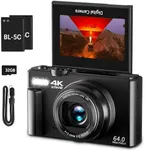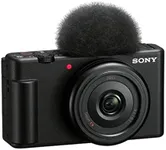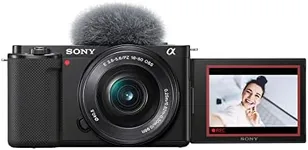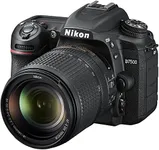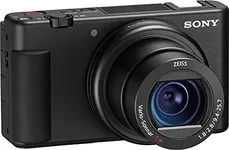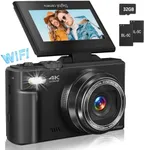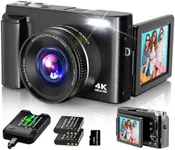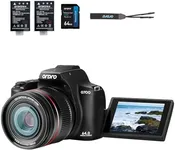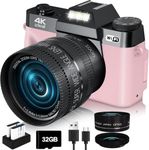Buying Guide for the Best Cheap Photography Cameras
Choosing the right photography camera can be a daunting task, especially if you're on a budget. The key is to understand what features are most important for your needs and how to evaluate them. By focusing on the essential specifications, you can find a camera that offers the best value for your money without compromising on quality. Here are some key specs to consider when selecting a budget-friendly photography camera.Sensor SizeThe sensor size in a camera determines the quality of the images it can produce. Larger sensors generally capture more light, resulting in better image quality, especially in low-light conditions. Common sensor sizes include Full Frame, APS-C, and Micro Four Thirds. Full Frame sensors are the largest and offer the best quality but are usually more expensive. APS-C sensors are smaller but still provide excellent quality and are more affordable. Micro Four Thirds sensors are even smaller and are typically found in more compact and budget-friendly cameras. If you're looking for a balance between quality and cost, an APS-C sensor is a good choice.
MegapixelsMegapixels refer to the resolution of the camera's sensor, indicating how many millions of pixels the sensor can capture. Higher megapixels mean more detail in your photos, which is important if you plan to print large photos or crop images. However, for most casual photographers, anything between 16 to 24 megapixels is more than sufficient. Higher megapixels can also mean larger file sizes, which require more storage space. Consider your typical use case: if you mainly share photos online or print standard sizes, you don't need the highest megapixel count.
Lens CompatibilityLens compatibility is crucial because it determines the versatility of your camera. Some cameras come with fixed lenses, while others allow you to change lenses. Interchangeable lens cameras, like DSLRs and mirrorless cameras, offer more flexibility and can adapt to different photography styles, from wide-angle landscapes to close-up portraits. If you want to grow your photography skills and experiment with different types of photography, choose a camera with a good range of compatible lenses. For beginners, a camera with a decent kit lens (usually 18-55mm) is a good starting point.
ISO RangeISO range indicates the camera's sensitivity to light. A wider ISO range allows you to shoot in various lighting conditions, from bright daylight to dim indoor settings. Lower ISO values (e.g., 100-400) are ideal for bright conditions and produce less noise (graininess), while higher ISO values (e.g., 1600 and above) are useful in low-light situations but can introduce more noise. For general photography, a camera with an ISO range of 100-3200 is usually sufficient. If you often shoot in low light, look for a camera with good high ISO performance.
Autofocus SystemThe autofocus system determines how quickly and accurately the camera can focus on a subject. This is especially important for capturing moving subjects or shooting in dynamic environments. Cameras with more autofocus points and advanced tracking features generally perform better. For casual photography, a basic autofocus system with around 9-11 points is adequate. If you plan to shoot sports, wildlife, or fast-moving subjects, look for a camera with a more sophisticated autofocus system with more points and better tracking capabilities.
Video CapabilitiesMany modern cameras offer video recording capabilities, which can be a valuable feature if you want to capture both photos and videos. Look for cameras that can record at least Full HD (1080p) resolution. Some budget cameras also offer 4K video, which provides higher resolution and more detail. Consider the frame rates as well; 24-30 fps is standard for most uses, while 60 fps is better for smooth motion and slow-motion effects. If video is a significant part of your needs, ensure the camera has good video features and quality.
Battery LifeBattery life is an important consideration, especially if you plan to use your camera for extended periods or in situations where recharging is not convenient. Battery life is usually measured in the number of shots per charge. For casual use, a camera that offers around 300-400 shots per charge is generally sufficient. If you plan to shoot extensively, consider a camera with longer battery life or the option to use external battery packs.
Build Quality and ErgonomicsThe build quality and ergonomics of a camera affect how comfortable it is to use and how well it can withstand regular use. Look for a camera with a solid build, preferably with some weather sealing if you plan to shoot outdoors. Ergonomics are also important; the camera should feel comfortable in your hands, with controls that are easy to access and use. If possible, try holding the camera before purchasing to ensure it feels right for you.



